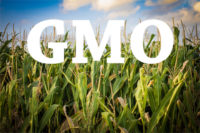FDA shouldn't get all the blame
The report, funded by the Robert Wood Johnson Foundation, calls for leadership by Congress and the US Department of Health and Human Services (HHS) to build an integrated national food safety system that effectively uses the best science and public resources to prevent foodborne illness.
“State and local agencies occupy the critical frontline in the nation’s food safety system,” said Michael R. Taylor, former FDA and USDA official, research professor of health policy at the GWU School of Public Health and Health Services and one of the report’s authors. “Food safety reform at the federal level will be incomplete and insufficient unless it strengthens state and local roles and builds true partnership across all levels of government.”
Although food products are regulated on the federal level by FDA and USDA, local and state health departments have long been the backbone of the nation’s food safety system, with primary responsibility for illness surveillance, response to outbreaks and regulation of food safety in restaurants, grocery stores and many food processing plants. At the local level alone, the report says, there are approximately 3,000 public health agencies involved in food safety. State-level departments of health and agriculture, as well as public health laboratories in most states, add to the complexity and fragmentation of the system, as does the important role of the federal Centers for Disease Control and Prevention, which interacts with agencies at all levels.
“The report highlights how local health departments protect people every day by helping to keep their food supply safe, whether they purchase food in a restaurant or store,” said Robert M. Pestronk, executive director of NACCHO. “At the same time, the report reinforces the need for an effective partnership among, and a greater allocation of resources to, federal, state and local government agencies.”
In addition to outlining the current roles of federal, state and local agencies in protecting Americans against foodborne illness, the report makes detailed findings on the strengths and weaknesses in the current food safety system. For example, the authors note progress in how federal, state and local agencies collaborate to detect foodborne outbreaks, but also find that state and local agencies are hampered in their response to and prevention of outbreaks by: lack of focused federal.
The report also suggests the establishment of a network of regional, federally-funded foodborne outbreak response centers to ensure an integrated “systems” approach to investigations to prevent far-reaching foodborne illness outbreaks (such as this winter’s peanut butter outbreak or last summer’s pepper problems). Each center would be staffed with a multi-disciplinary team of federal, state, and local epidemiologists, environmental health officials, regulators and communications experts to mount an effective response to outbreaks and conduct follow-up investigations to inform future prevention efforts.
For more information, visit the Food Safety Research Consortium’s Web site.